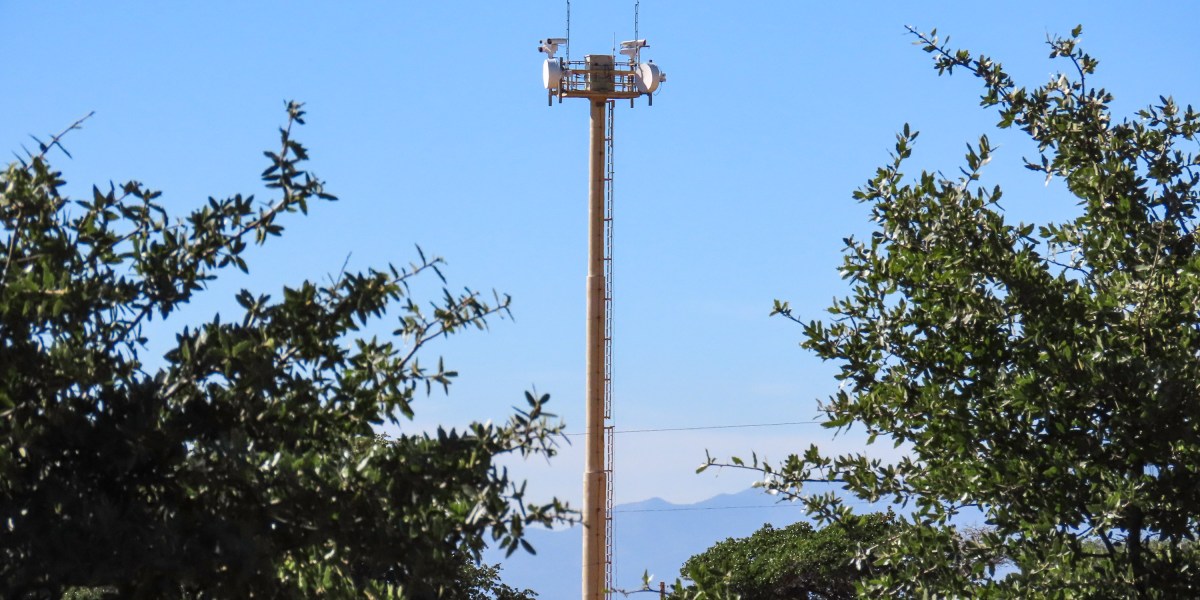The US is pouring money into surveillance tech at the southern border

According to EFF, the agency plans to triple the number of towers, from 135 today to 442, and upgrade existing towers with new technologies in the next several years.
There are three different types of towers: integrated fixed towers, remote video surveillance systems, and autonomous surveillance towers. They all focus on detecting people from afar, and the makers of the first two types claim that sophisticated cameras, radar sensors, and lasers on the towers can detect a person from over 7.5 miles away. The autonomous surveillance towers are the newest of the group, and though they have shorter range—they can detect a person from 1.7 miles away—they are equipped with movement-detecting radar and detection AI that allows for imagery to be analyzed without human review.
According to the 2023 CBP budget, the agency plans to consolidate all the towers into one interoperable program and ultimately erect a total of 723 towers between the northern and southern border.
But for all the technology, according to Maass, the goal of the program isn’t entirely clear: “I have never heard a very well-articulated explanation of what the goal is. Is it the goal to deter people from crossing the border? Is it to document people crossing the border? Is it to intercept people crossing the border? Like … what is it?”
So why is the program being expanded so drastically? We’re not totally sure, and the agency declined to comment on the record. According to Maass, justifications are rooted in the crisis mentality of agencies responding to migration at the border. “All you hear is Crisis at the border, crisis at the border,” he says, but usually the real crises are happening at points of entry or along common migration routes. “You don’t need a surveillance tower to know that there’s a bunch of asylum seekers camped out under a bridge in El Paso,” he says.
Maass says he found evidence of the US using surveillance towers at the border as early as 1930. But the risks of more advanced, more comprehensive, and more accurate technologies are real, especially when they target border communities.
All the surveillance is disrupting the daily lives of those communities, and a recent report by the ACLU of Texas showed that the mental health of residents was significantly affected by surveillance, whether assumed or real. David Donatti, a staff attorney with the group, says the research showed that “a majority of people avoided going to essential locations like grocery stores, hospitals, polling places, and community centers because they were afraid of encountering border patrol.”
Donatti also points out that migrants overwhelmingly enter the US legally and without trying to evade authorities, so surveillance tech isn’t needed in most cases. As legal options are squeezed, would-be migrants resort to more dangerous ones, but Donatti says more surveillance doesn’t address the root problem.


